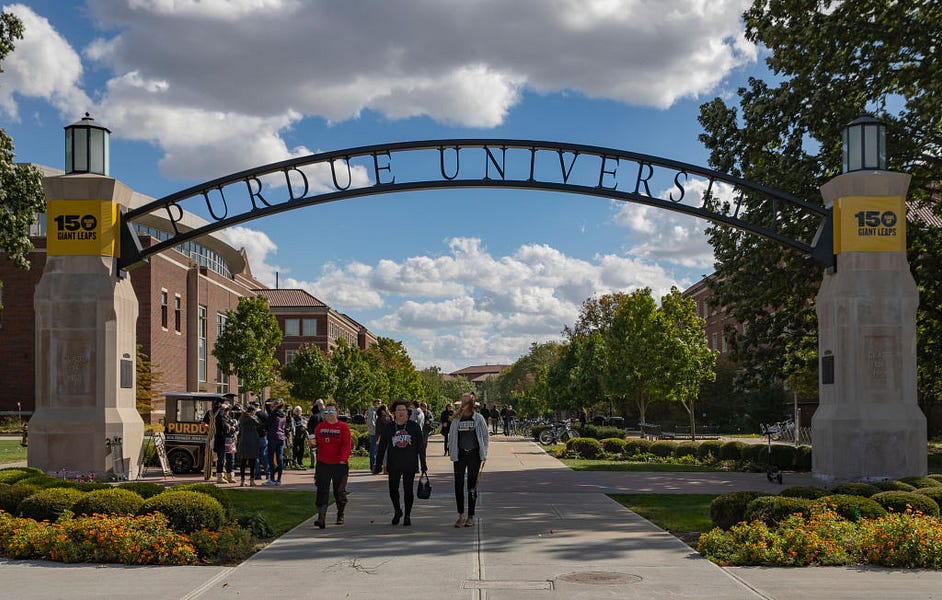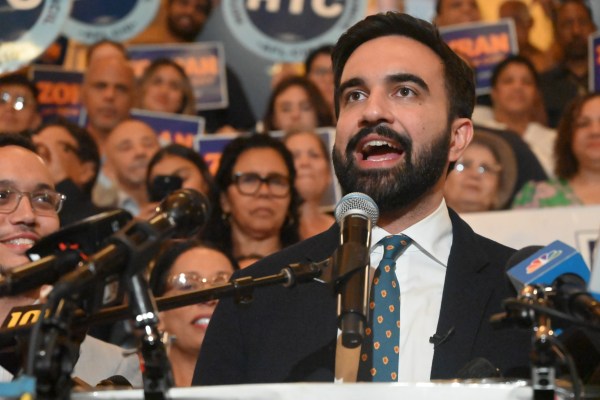President Biden’s sweeping higher education agenda has crashed into reality. His $2.9 trillion in proposals for “free” community college and student debt forgiveness aren’t going anywhere. But this would be a poor moment for conservative gloating.
Sure, the hysteria about student debt is wildly overstated and community college is already functionally free for low-income students. But, for all that, college affordability is a real issue and deserving of attention. College degrees have enormous financial and social benefits and are a prerequisite for all manner of good jobs. This means there’s a lot of incentive to attend college. It seems obviously appropriate that those who benefit from college bear some responsibility in paying a reasonable, manageable amount for an extraordinarily valuable experience. At the same time, college debt can be a crushing burden for some, especially for those who don’t complete a degree.
One response to all this is to ask whether college degrees should play such an essential role or whether they constitute an inappropriate, constitutionally suspect hiring test erected and maintained by the college-industrial complex. While there’s an obvious job-related rationale for an employer requiring an aspiring nurse to hold a nursing degree, it’s tough to make the case that would-be rental car desk clerks must first buy a bachelor’s degree. It’s an important point that deserves a lot more attention than it gets.
More prosaically, though, there are plenty of practical solutions that can be pursued right now and that don’t entail new federal outlays. Across the land, there are communities, colleges, states, and private ventures working to make college more affordable and less risky, while dodging the perverse incentives of loan forgiveness and a federal “free college” program. These localized initiatives have many advantages, including the reality that they can be carefully tailored and ensure that aid is coupled with structured support and reciprocal responsibility.
One such effort, recently profiled in The Hill, is Ohio State University’s new “Scarlet & Gray Advantage” program, which will combine scholarships, grants, work opportunities, and career coaching to help students graduate debt-free. Participants will need to commit to graduating in four years, engage in financial literacy programs, take advantage of work opportunities, and annually submit the federal student financial aid form (FAFSA). Launching this fall with 125 students, the program is to eventually be backed by an endowment of $500 million that OSU hopes to raise over the next decade.
OSU’s announcement has drawn notice, as there is much to like here—especially given its emphasis on marrying new opportunities with old-fashioned personal responsibility. But while the Scarlet & Gray program is, thus far, nothing more than a press release, lots of noteworthy efforts are already underway and equally deserving of notice.
The nation is dotted with “college promise” programs, which offer scholarships to cover up to 100 percent of tuition and fees at nearby colleges to students who graduate in good standing from local schools. The College Promise Campaign reports there are more than 300 promise programs today across 47 states. All are modeled, to some degree on the Kalamazoo Promise program, launched in Kalamazoo, Michigan, in 2005. Students who attend Kalamazoo Public Schools for all grade levels, K-12, are given the opportunity to attend any in-state public college or university tuition-free if they meet the residency requirements and graduate from one of the four local high schools. Students who attend Kalamazoo Public Schools for at least four years still receive a 65 percent scholarship.
The City University of New York’s Accelerated Study in Associate Programs (ASAP) initiative, launched in 2007, provides integrated academic, personal, and financial support to low-income community college students. Full-time, qualifying students are eligible for financial support, including free textbooks, funds for transit and food, and a waiver that covers any tuition or fees that exceed a student’s existing grant aid. Students are required to take advantage of resources like a dedicated adviser to assist with academic and social issues, a career counselor, tutoring services, and priority scheduling to ensure they’re able to take required courses on the necessary timeline. To date, ASAP has served more than 70,000 students, with a high-quality MDRC randomized controlled study finding significant benefits in cost-per-degree and in degrees completed.
A very different approach is offered by in-house Income Share Agreement programs (ISAs) which allow students to avoid taking “last dollar” loans from private providers or the federal PLUS program. With an ISA, a college supplements financial aid or direct federal lending in exchange for an agreed-upon percentage of post-graduation income over a set number of years. The best known of these is Purdue University’s Back a Boiler program, championed by Purdue President and former Indiana Gov. Mitch Daniels, which allows students to receive aid based on expected post-graduation earnings (participants are able to borrow up to 15 percent of their expected annual income each year). Students who earn less than a specified minimum in a given year are off the hook for repayment, and there’s a maximum repayment amount for high-earning grads. Other institutions piloting ISA’s include Lackawanna College, Clarkson University, the University of Utah, and Robert Morris University.
Bearing more than a passing resemblance to ISAs is “forward-looking underwriting,” which involves the provision of private loans based on a borrower’s future earning potential. Emphasizing indicators like institution and major, rather than traditional measures of creditworthiness, lenders such as MPower Financing are seeking to expand access to this kind of financing option, offering an alternative to loans while strengthening market discipline for colleges and providing valuable signals to students.
Further away from “traditional” higher ed, there’s lots of intriguing activity. For instance, “competency-based” education (CBE) bases completion on skills and learning rather than course credit hours. Instead of moving on a semester-by-semester clock, students can progress through online courses when they demonstrate mastery of the requisite material, permitting accelerated credentials, big cost savings, and radical customization. A pioneer in this space, Western Governors University, has had much success with this model—and graduated more than 250,000 students to date. It charges students a flat rate per semester (generally about $3,000 to $4,000)—which covers courses, learning materials, assessments, and the rest—and then allows students to complete as many courses as they want in a term for that fee.
Learning accelerators offer an array of short-term, immersive training programs that are intended to prepare students for jobs that require tech skills (like web development or data science). Organizations like Dev Bootcamp, Flatiron School, General Assembly, App Academy, Galvanize, and others offer such accelerated career-training programs where students attend a 10- to 15-week course for around $10,000 to $15,000. Many of these programs are selective, and most are intense, with students working closely with classmates and instructors for up to 60 hours a week.
Meanwhile, for all the Elizabeth Warren crowd’s laments about state inaction, state legislatures considered more than 1,400 bills on higher education funding in 2021. At least five states considered expanding or creating new promise scholarship programs. Seven states took up proposals to subsidize the cost of textbooks and other materials. And Alabama, California, Colorado, Maryland, and New Hampshire adopted universal FAFSA completion policies, joining Louisiana, Texas, and Illinois in requiring all students to fill out the FAFSA before they graduate high school.
There are real challenges when it comes to college affordability. There are also extraordinary opportunities to tackle these in ways that advance opportunity, responsibility, and customization. Instead of calling for massive new federal outlays, reformers might instead focus on supporting and extending the wealth of promising solutions that are trying to break through the college cartel’s inertia and bloat. That means making it easier for students enrolled in competency-based education to tap federal aid and changing rigid rules which impede ISAs or learning accelerators.
In a sector bedeviled by out-of-control costs and bureaucratic bloat, it’s odd to imagine that more federal spending is the answer. Why spend trillions trying to make college provision look more like Amtrak or the U.S. Postal Service when a host of ZipCars, Ubers, FedExes, and UPSs are already clamoring to get more fully in the game? Perhaps the better answer is to invite them in.
Frederick M. Hess is director of education policy studies at the American Enterprise Institute.






Please note that we at The Dispatch hold ourselves, our work, and our commenters to a higher standard than other places on the internet. We welcome comments that foster genuine debate or discussion—including comments critical of us or our work—but responses that include ad hominem attacks on fellow Dispatch members or are intended to stoke fear and anger may be moderated.
With your membership, you only have the ability to comment on The Morning Dispatch articles. Consider upgrading to join the conversation everywhere.